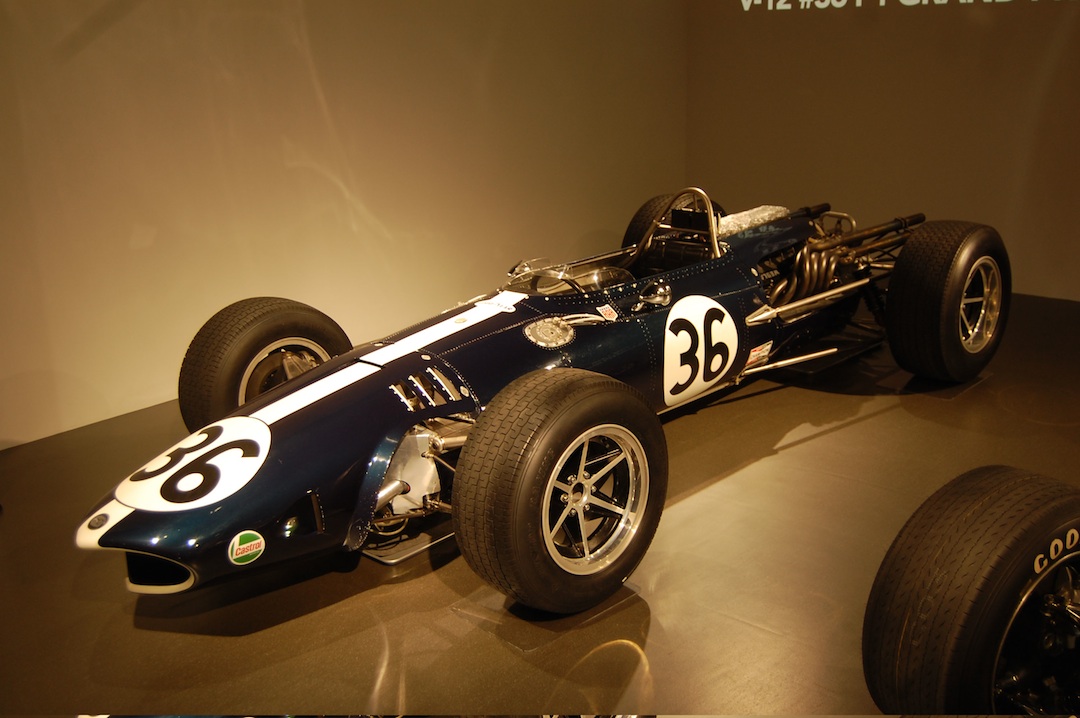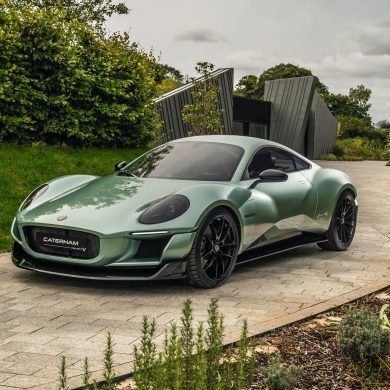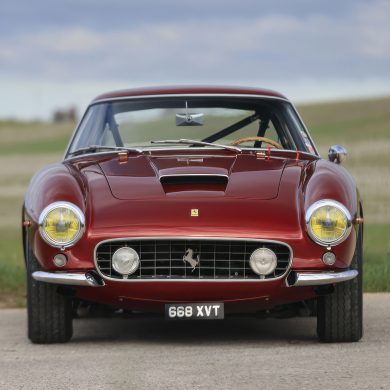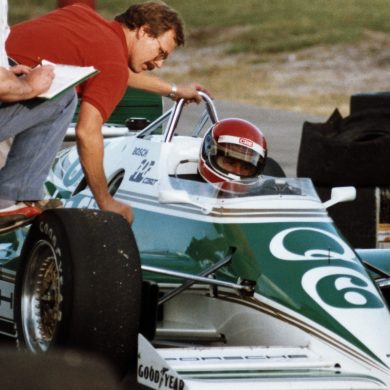The “Eagles Have Landed” exhibit honoring Dan Gurney at LA’s Petersen Automotive Museum opened last Friday night with a reception at the museum. A full house heard welcoming comments from the museum’s executive director Terry Karges before board member Charles Nearburg, in whose Family Gallery the Eagles are being displayed, provided a retrospective of Gurney’s career. Finally, the crowd heard from Dan Gurney himself.
The exhibit includes a dozen racing cars created by Gurney’s All American Racers organization since 1966, as well as one of Dan’s groundbreaking Alligator motorcycles. The cars displayed include: the 1967 Eagle-Weslake Formula One car (above) with which Gurney won that year’s Belgian Grand Prix at Spa; the 1968 Eagle-Gurney-Weslake Ford Indycar in which he finished 2nd in the Indianapolis 500 and subsequently won the Rex Mays 300 at Riverside; the 1968 Eagle-Offy that carried Bobby Unser to victory in that year’s Indy 500; Dan’s 1969 McLeagle, an AAR-modified McLaren Can-Am car he used to challenge the dominant McLaren factory team; the 1970 Plymouth Barracuda for the Trans-Am series that Dan drove in the final competitive outing of his career; the 1971 Eagle-Offy Indycar that works driver Bobby Unser took to seven pole positions and a pair of wins that season; the 1972 Olsonite Eagle-Offy with which Unser shattered the qualification records at Indianapolis in taking pole for that year’s 500; the 1975 Jorgensen Eagle-Offy that brought Unser a second victory at Indy; a 1978 Eagle DGF like that driven by David Loring to the SCCA National Formula Ford Championship; the 1981 Pepsi Challenger Eagle-Chevrolet with which Mike Mosley took a stunning triumph in Milwaukee that year; the 1992-1993 Eagle MKIII-Toyota GTP entry that, in the hands of Juan Manuel Fangio II and PJ Jones, dominated IMSA Camel GT competition on the way to back-to-back double championships for drivers, Fangio, and constructors, AAR; and an example of the final Eagle Indycar built from 1999, Robby Gordon’s Eagle 997.
Beyond the cars, also on display are various memorabilia from Gurney’s career, including the (empty) magnum of Moet with which he invented the champagne-spraying victory tradition at Le Mans in 1967, the Bell Star full-face helmet that he debuted at Indianapolis in 1968, an experimental three-valve version of the Gurney-Weslake Ford engine, an example of the Gurney Flap aerodynamic device that Dan invented in 1971 and several books from his childhood that spurred his interest in automobiles and the racing of them. For complete information about the museum and this exhibit, please visit www.petersen.org










